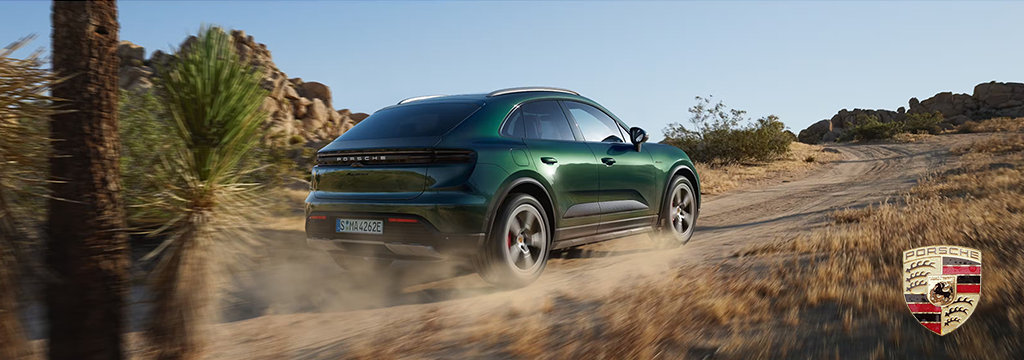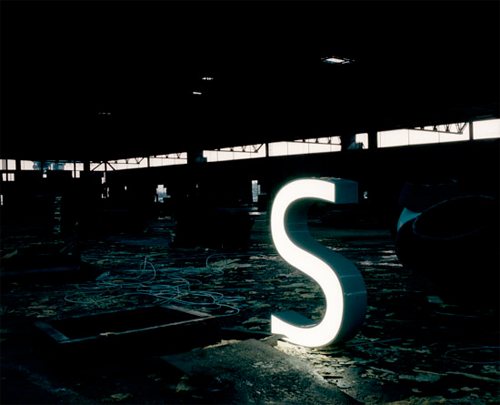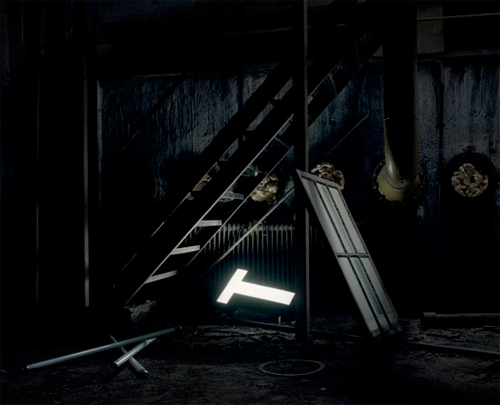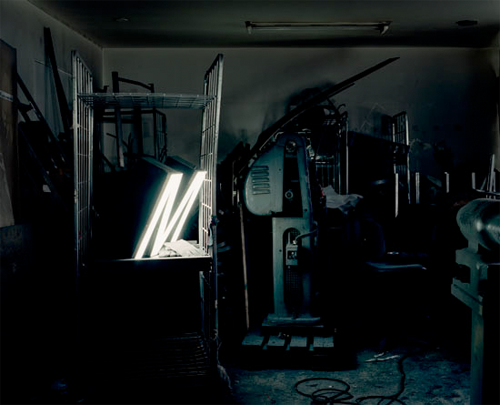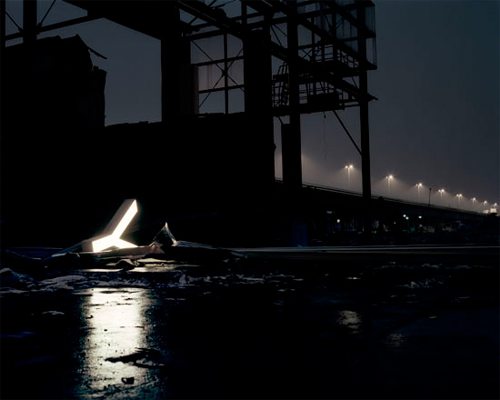 click > enlarge
click > enlarge
When I came across Peteris Zilbers‘ Moodbroom at ICFF this weekend, I thought the designer had cleverly repurposed unloved push brooms into a creative lighting element, and I was actually disappointed to learn that the Moodbroom is, in fact, a brand new object made from wood, plexiglass and an unknown composite material, not, as I had hoped, from recycled materials.
Zilbers’ design asks the question, “What happens when an ordinary household object like a broom is re-imagined?” His answer is a lamp that “plays with function in everyday objects and engages users in a game that alters perceptions of a common item.” The lamp is controlled by a remote that allows you to change the light to any color of the rainbow, or you can set it to rotate through the spectrum.
You can’t tell from the pictures, but the ‘brush’ part of the broom is incredibly heavy – so heavy that I couldn’t even lift it. Yes, I have weak arms, but I shouldn’t have to be a body builder to lift a lamp. Besides, even if you don’t have a problem with the Moodbroom’s weight and materials, what about that cord? In such a simple design the cord seems like a blaring distraction and a huge flaw. Overall, repurposing the traditional broom shape into a light doesn’t strike me as a real stretch of the imagination, and the finished project has too many unconsidered elements to justify its hefty price tag ($500+).



about perrin drumm
 click>enlarge
click>enlarge
Stockholm-based studio Claesson Koivisto Rune have an impressive showing at Milan Design Week, with over twenty projects being exhibited at thirteen different booths, but out of all their impressive work that includes furniture as well as architecture, I like Ray, the LED pendant lights made for the Dutch retailer NgispeN.
Named after the rays of a sun in a child’s drawing, the shade is laser-cut from thin metal that can be bent or adjusted into a variety of angles. Clustered tightly together, the light will focus strongly on one point, but open up the rays and you get a softer effect. The lights look great clustered together in one color as well as in multiple shades (I smell a restaurant interior…) or alone. Even though this takes its inspiration from children’s drawings, I could really use something bright and cheerful in my grown up apartment. Let’s hope NgispeN makes them available to the public soon.
You can see the light at NgispeN’s booth as well as the Temporary Museum for New Design in Superstudio Piu. [ claesson koivisto rune ]



about perrin drumm

Designed and built by a group of mechanical engineering students at the University of Pennsylvania, the aptly named “Alpha” bike has been called “possibly the most high-tech bicycle ever” and “the ultimate concept bike.”

High on the long list of heretofore inconceivable innovations is an electronic clutch that allows the rider to switch between fixed-gear and freewheel settings. It also boasts internal electronics powered by the bike itself. Pedaling charges two 120 Farad super capacitors (and you thought only Marty McFly knew what that was) that power two rear LEDs and an LCD screen built into the handlebars, that displays real-time data like RPMs, distance and speed. There’s also an SD card under the handlebars that stores more specific information about the bike dynamics that you can analyze post-ride.
If you want to see some rotating 3D renderings of the bike (aka bike porn) and read all the in-depth information too difficult for non-mechanical engineers to decipher, check out the UPenn team’s dedicated website. No word yet on whether they’re fabricating more for sale, but if they are my birthday is right around the corner (wink wink).
[ bike website ]

about perrin drumm
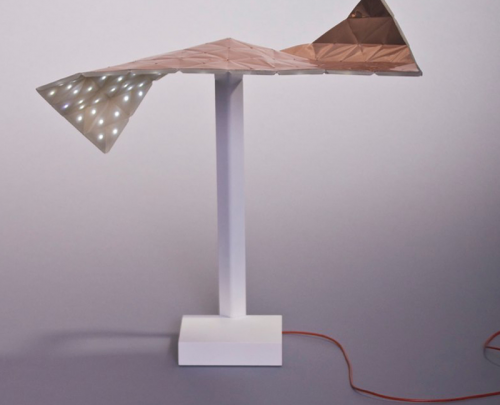 omri barzeev’s ‘starlight’ lamp is a perfect example of an interesting new material applied in an unattractive, nonsensical way.
omri barzeev’s ‘starlight’ lamp is a perfect example of an interesting new material applied in an unattractive, nonsensical way.
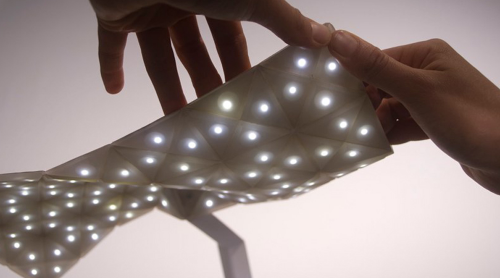
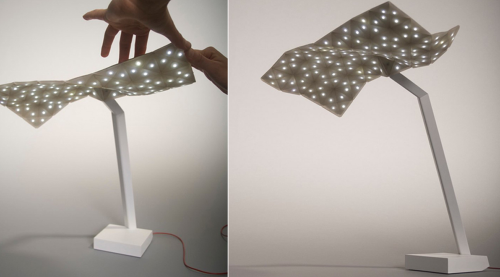
Kudos to Barzeev for designing a mutable sheet of LED lights that look like stars in the dark, but as for sticking a rectangle of it on a base, that gets a big thumbs down. As it is now, the Starlight lamp looks more like a model for a large-scale application of the LED sheet than a finished product. How cool would this be if it was huge, if it lined the ceiling in a large space, or was mounted against an entire wall? It has a lot of potential that ought not to be restricted to a dinky lamp that looks as if it’s about to totter over. Omri, you’re halfway there, now back to the drawing board!
designer: omri barzeev

about perrin drumm
 Baaaravo! A Baa-Studs new release.
Baaaravo! A Baa-Studs new release.
Amazingly, devoid of CG, blue screen shananigins. LED-strapped sheep art at its best.
via zoom in — EXTRA! play your YouTube movies without distraction: quietube
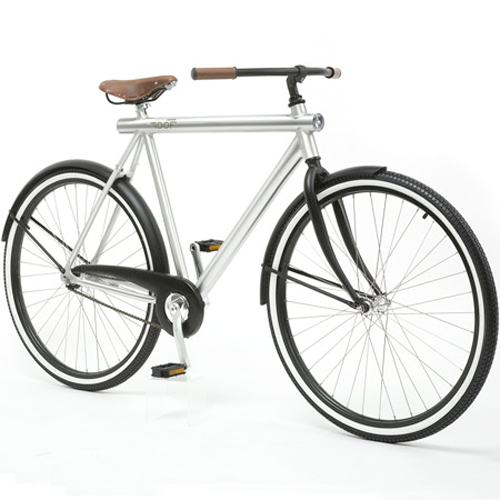
New York design brand Areaware have launched Moof, an aluminium bicycle by Dutch designer Sjoerd Smit that features built-in solar-powered lights.
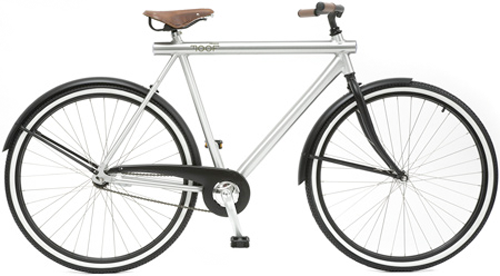
Designed in Amsterdam, MOOF’s unique aluminum construction houses two solar powered lamps – one to light the way and the other to make you visible from behind.
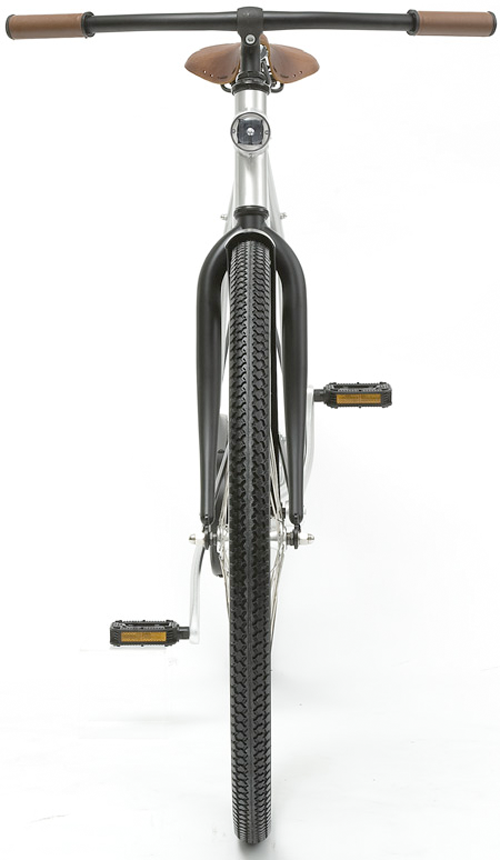
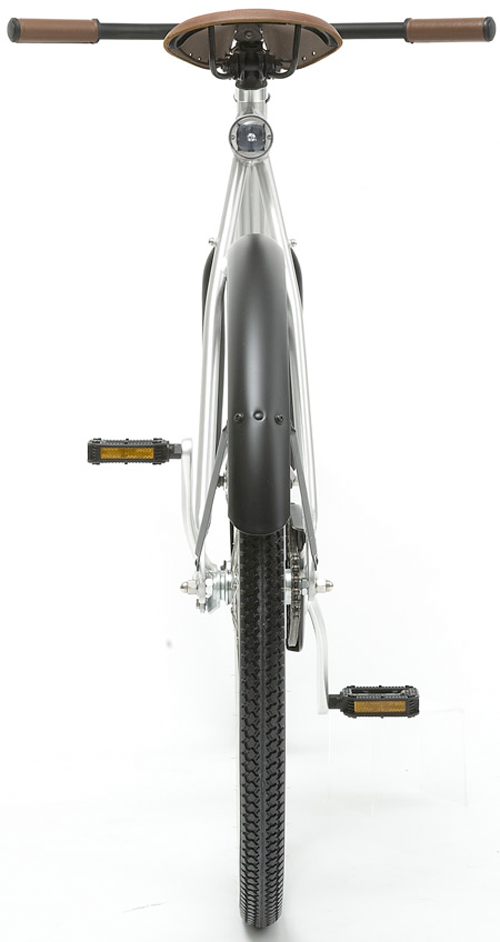
This single speed sleek and smooth urban cruiser is both smart and conscientious.
Bike Weight: 28.5 lbs (13 kg)
Frame: 6061 Series Powder-Coated Rustproof Aluminum
Drive Train: Chain Drive
Wheels: Alloy 28″ (71 cm)
Tires: Kenda Cosmos
Lights: Solar powered LED
Brakes: Rear Coaster
Saddle: Adjustable springless leather saddle
Grip: Semi-leather
Weight Limit: 264 lbs (120 kg)
Height Limit: 5’10″ – 6’6″ (179cm – 200cm)
Available for pre-order. Approximate ship date: April 2009
Designer: Sjoerd Smit
Producer: areaware
Retailer: areaware
via dezeen
 click > enlarge
click > enlarge


